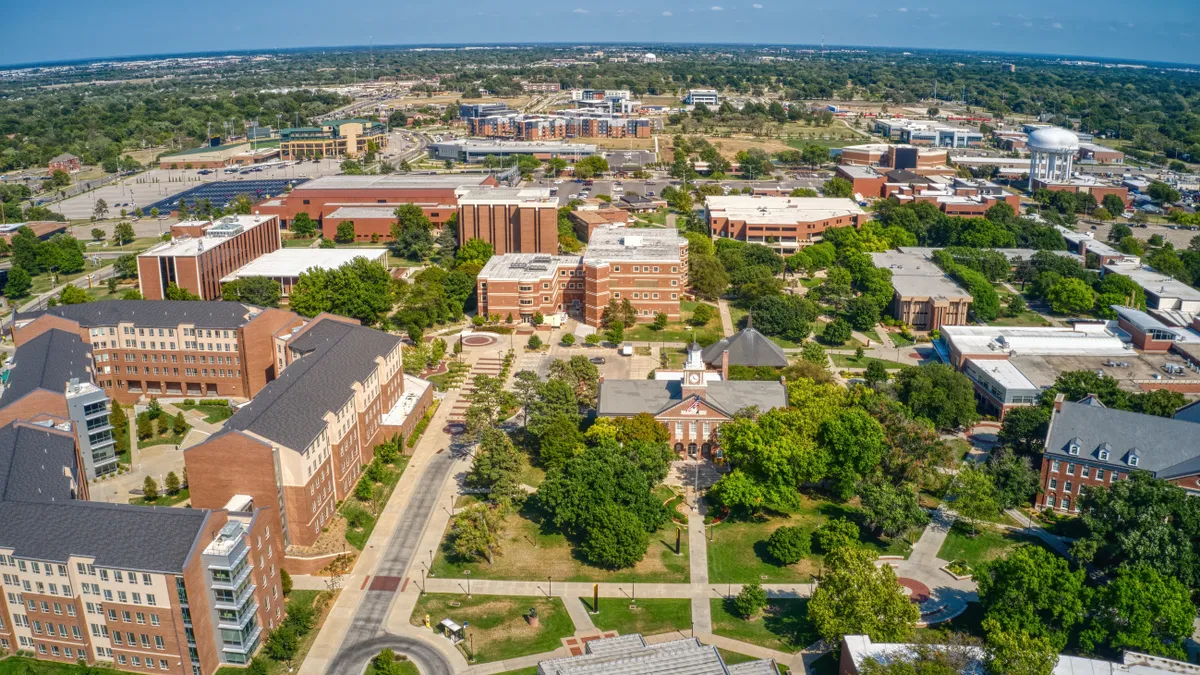Dive Brief:
- A group of researchers identified 474 institutions that they're classifying as regional public universities — an effort they hope will help policymakers, other researchers, philanthropists and the colleges themselves, which often sit in the shadow of more prominent research and land-grant universities.
- The Alliance for Research on Regional Colleges says that regional publics on its new list educate more than 5 million students, representing 47% of all students seeking bachelor's degrees at four-year public institutions. Some 37% of their students receive federal Pell Grants, on average, indicating many are from low-income families.
- Regional public institutions educate 58% of Black or African American students attending public four-year colleges. They enroll 35% of Asian American students, 47% of American Indian or Alaska Native students, 39% of Native Hawaiian or Pacific Islander students, 44% of Hispanic or Latino students, and 44% of multiracial students.
Dive Insight:
The new list of regional public colleges is made up of many institutions that are unlikely to be recognized in much of the country. They include institutions that are part of large systems like the State University of New York, City University of New York and California State University systems. But they also include affiliates of well-known flagships, like University of Tennessee-Chattanooga, institutions with directionally descriptive names, like Eastern Oregon University, and others, such as Great Basin College in Nevada.
Researchers who study regional publics say they are important to their local communities — they're economic drivers and provide access to higher education. But they also say the sector has historically been poorly defined, overlooked and understudied.
"Until very recently, RPUs were largely absent from scholarly and policy discussions," said Cecilia Orphan, a higher education professor at the University of Denver who is director of partnerships for the Alliance for Research on Regional Colleges. "This study contributes a dataset and interactive map that we hope will support future research and better understanding about these important institutions and their students and regions."
The researchers' interactive map is posted online here.
Researchers built their list using a cluster analysis, meaning they identified institutions from a large dataset based on shared or similar characteristics. They used all four-year public institutions in the federal Integrated Postsecondary Education Data System database, analyzing 128 different variables.
Their analysis yielded two clusters of institutions: regional publics and nonregional publics. Most of the latter group were flagship or land-grant institutions.
However, 29 land-grant institutions made it into the regional public university group, including 19 land-grant historically Black colleges and universities, all of which are 1890 land-grant institutions. The 1890 land-grant colleges were established after federal legislation prompted segregated states to set up land-grant institutions for African Americans.
"We interpret these results as meaning that 1890 land-grant HBCUs have regional service and access missions which is why they clustered as RPUs," the researchers wrote. "The nine land-grant universities likely clustered as RPUs because they enroll large shares of Pell recipients and in-state students."
Regional public institutions typically post lower tuition rates than nonregional publics, the researchers found. Tuition and fees average $8,896 per year at regional publics and more than $12,000 for nonregional publics.
But regional publics receive relatively low state funding — regional publics average $1,091 less in state appropriations per full-time equivalent student than nonregional publics. They also receive far less money from federal grants and contracts, and they hold fewer endowment assets.
Those funding disparities mean lower resources at regional publics, the researchers say. The average regional public has fewer tenured faculty per full-time equivalent student than the average nonregional public. It also trails in the number of full-time instructional, research and public service staff.
Nearly a third of regional publics qualify as minority-serving institutions. Almost half are rural-serving institutions.
"These connections are particularly crucial when considering the role these campuses play in rural places where they may be the only educational access point and a major contributor to the local economy," Andrew Koricich, the alliance's executive director, said in a statement.















